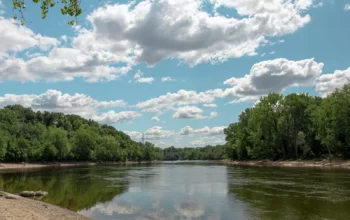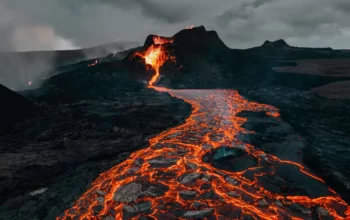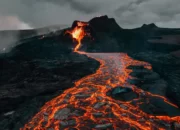middleportal.com – Plate tectonics is a fundamental concept in geology that explains the dynamic nature of the Earth’s surface. The movement of tectonic plates is driven by various geological processes, one of which is the movement of heat within the mantle. This article will delve into the intricate relationship between heat convection and plate movement, shedding light on the fascinating mechanisms that shape our planet.
The Mantle: A Crucial Player
The mantle, located beneath the Earth’s crust, is a layer composed of solid rock. However, deep within the mantle, there exists a region known as the asthenosphere, where the rock is partially molten. This molten rock, called magma, is under immense heat and pressure.
It is within the asthenosphere that the movement of heat begins. The tremendous heat generated from the Earth’s core causes the magma to heat up and become less dense. As a result, the heated magma rises towards the surface, creating convection currents within the mantle.
Convection Currents: The Driving Force
Convection currents are circular movements of fluid driven by temperature differences. In the case of the Earth’s mantle, these currents are responsible for the movement of tectonic plates. The process can be visualized as a boiling pot of water, where heat causes the water near the heat source to rise, cool down, and sink back down.
Similarly, in the mantle, the heated magma rises due to its reduced density. As it reaches the upper part of the mantle, it begins to cool down. Cooler magma is denser, causing it to sink back towards the core. This continuous cycle of rising and sinking magma creates convection currents within the mantle.
Plate Tectonics: The Result of Heat Convection
The movement of tectonic plates is a direct consequence of the convection currents within the mantle. The Earth’s crust is divided into several large and small tectonic plates that float on the semi-fluid asthenosphere. As the convection currents within the mantle move the magma, they also push and drag the tectonic plates along.
There are three primary types of plate boundaries: divergent, convergent, and transform. At divergent boundaries, such as the Mid-Atlantic Ridge, the plates move apart due to the upwelling of magma from the mantle. This process forms new crust as magma solidifies, creating a gap between the plates.
Convergent boundaries, on the other hand, occur when two plates collide. Depending on the type of plates involved, different geological features can form, such as mountain ranges or trenches. In this case, the convection currents within the mantle cause the plates to move towards each other.
Finally, transform boundaries are characterized by plates sliding past each other horizontally. The San Andreas Fault in California is a well-known example of a transform boundary. Here, the convection currents cause the plates to move in opposite directions, resulting in earthquakes.
A Continuous Cycle
It is important to note that the movement of tectonic plates is not a linear process. The convection currents within the mantle are constantly changing and evolving, leading to the continuous movement and reconfiguration of the Earth’s crust. This dynamic cycle of heat convection and plate movement is responsible for the creation of mountains, ocean basins, and various geological phenomena.
In conclusion, the movement of heat within the mantle plays a crucial role in driving the movement of tectonic plates. The convection currents created by the upwelling and sinking of heated magma cause the plates to move apart at divergent boundaries, collide at convergent boundaries, and slide past each other at transform boundaries. Understanding the intricate relationship between heat convection and plate tectonics helps us comprehend the dynamic nature of our planet and the geological processes that shape it.







